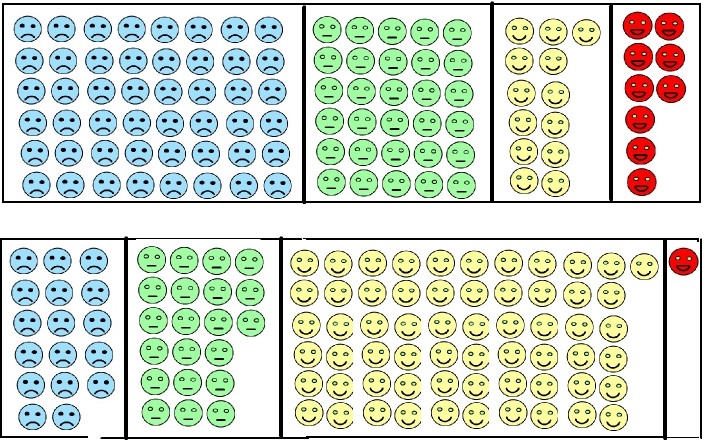I continue to struggle with the question of where cryptocurrency gets its value.
(Note: When I say “value”, I mean private value, as reflected in the price. Social value is a whole separate question, for a separate blogpost.)
To be fair, I also struggle a bit with the question of where gold and dollars get their value. So let’s consider some of the reasons various assets might be valuable, and ask which arguments apply to other assets.
1. Gold is valuable because you can use it to make jewelry and electronics. I have no doubt that this is true (which is not the same thing as saying that this is the only reason gold is valuable.)
2. Dollars are valuable because (at least if you are an American) you can use them to pay your taxes. One hears this all the time, and I plead guilty to parroting it from time to time in the past. But it’s stopped making any sense to me. Here’s why: Taxes are foreseeable. In order to pay my taxes on April 15, I don’t need to hold dollars on April 13, let alone in January, February or March. Instead, I either borrow from a home equity line or sell off some bonds on the morning of April 15, and hold the money until the government cashes my check a week or so later. That’s a pretty small contribution to the annual demand for money.
To put this another way, one billion people paying $100 tax bills does not create a demand for a stock of 100 billion dollars. Instead, it creates a demand for 100 billion dollars for about 2% of the year.
Notice then, that despite the superficial similarity, argument number 1 (for gold) and argument number 2 (for dollars) are crucially different, because in order to have gold jewelry or gold electronics, you’ve got to have gold pretty much permanently employed as jewelry or electronics, whereas in order to pay your taxes with dollars, you can hire your dollars on the spot market and then be rid of them.
3. Dollars are valuable because you can use them to make small unexpected purchases. Yes, this makes sense. I have a $20 bill in my pocket right now precisely in case I want to buy some ice cream on a whim. When I go to a street fair, I carry even more.
4. Dollars are valuable because you can use them to make large, planned, and (if you care about this) anonymous transactions. Presumably this is why a lot of dollars spend a lot of time in suitcases traveling back and forth between the United States and Colombia. I buy this one.
5. Crypto (e.g. Bitcoin) is valuable because you can use them to make large, planned, and (if you care about this) irreversible transactions. I buy this one, but as you’ll see below, I don’t think it can explain a high price for Bitcoins.
Now: How does all of this apply to understanding why people hold dollars, gold and crypto?
1. There is, I think, no good analogue of jewelry/electronics when it comes to Bitcoin (or for that matter when it comes to dollars). That’s one step toward understanding gold and zero steps toward understanding Bitcoin.
2. There is also no good analogue of paying taxes when it comes to Bitcoin. On the other hand, as noted above, I’ve stopped believing this explains much of anything anyway, so I’ll count this as zero steps toward understanding anything.
3. For small unexpected purchases, at least with current technology, dollars seem to clearly dominate Bitcoin, for a variety of reasons including (most crucially) the lack of transaction fees. So I’m going to count this as one step toward understanding dollars and zero steps toward understanding Bitcoin.
4,5. That leaves large, anonymous transactions, and/or transactions that you want to be irreversible. For this, I believe Bitcoins are often far better than dollars. But (you might say paradoxically), this very feature should make Bitcoins less valuable, not moreso. Here’s why: If I want to move a lot of wealth around the world using dollars, I need to hold a lot of dollars for a substantial period of time. If I and my trading partners want our transactions to stay anonymous, we might hold on to those dollars for a much longer time, rather than facing the trouble of re-acquiring them the next time we need them. But if I want to move a lot of wealth around the world using Bitcoin, I can (not with perfect ease, but a lot more easily than with dollars) acquire them moments before I want to transfer them, and be done with them. There’s no reason for me to tie up my wealth in a non-interest bearing asset before it’s absolutely necessary — and with Bitcoin, relative to dollars, it’s not absolutely necessary until quite late in the game.
So — and again, call this a paradox if you want to: The better Bitcoin serves its purposes, the less it should cost (in terms of dollars). If Bitcoin (or some other cryptocurrency) improves to the point where nobody has any reason to hold it for more than a second, its price will be close to zero. One reason dollars are worth as much as they are is that dollars are relatively clumsy, so to use them, you’ve got to hold them a while.
That, then, is one small step for dollars and zero steps for Bitcoin.
I am not saying there’s no reason Bitcoin should be valuable. I’m saying that whatever the reason might be, I don’t get it. And I’m pretty sure that most of the things you hear on this subject are just plain wrong.
There is another reason why Bitcoin is harder to understand than dollars, and that’s this: Dollars have just one price (basically the number of apples or haircuts you have to sell to acquire a dollar). Bitcoins have two prices — the number of dollars you need to buy a Bitcoin and the dollar value of the fees you pay every time you transact. Any argument that starts with “demand is high (or supply is limited) so the price should be high” is instantly suspect until one sorts out which of the two prices is being explained here, and why. But that’s a separate topic, which I already blogged on last week, so I’ll stop here and end with a question:
Can anyone give me a plausible reason (not necessarily a slam-dunk correct reason, just a plausible one) why cryptocurrency should have any value at all, except during the course of a speculative bubble?






